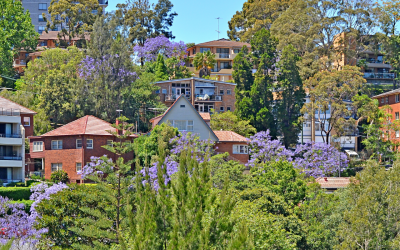If you’re looking to buy a property, you’ve probably heard people talk about stamp duty, also known as transfer duty. But what is it, and does it apply to you?
Simply put, stamp duty is a tax we pay when buying a house. The exact amount depends on the state or territory you live in and the price of the property you’re buying, and sometimes exemptions apply. On average, Australians pay tens of thousands of dollars in stamp duty. That’s on top of the mortgage, deposit and other expenses that come when buying a property.

How much does stamp duty cost?
The exact price of stamp duty takes a few calculations. Start with these three questions to get an idea of what you will have to pay.
1. Which state or territory do you live in?
Stamp duty is decided by each state and territory government. This means each state and territory has a different set of rates, price brackets and exemptions. So, if you buy a $700,000 home in Albury, NSW you’ll currently pay $1,000 less than in stamp duty than your mate down the road in Wodonga, VIC. There’s a full list of each state and territory’s stamp duty rates below.
2. How much is the house you’re buying?
The price of your property is a key factor in your stamp duty calculation. Each state and territory has brackets for house prices that determine how much you owe. Take NSW: for example, the first bracket is on properties worth anything up to $14,000. But the bracket most Sydneysiders would fall into is properties worth $300,000 to $1 million. After you’ve narrowed your stamp duty down by state or territory, your house price will decide the rate you pay.

3. Are you entitled to any exemptions?
Now for some good news! Before you have to potentially hand over tens of thousands of dollars in tax, you might qualify for a stamp duty exemption. For example, in some states first home buyers and pensioners don’t have to pay any stamp duty on homes of a particular price. Or, for those who don’t qualify for a full exemption, there are still reduced rates available for certain circumstances. During the pandemic, the Victorian government announced up to 50% off stamp duty on homes of a particular value for a limited time. We recommend always checking your state or territory’s exemptions to see if you qualify for a stamp duty concession.

When do I have to pay stamp duty?
Stamp duty must be paid either before, or, on the day of settlement to ensure that your settlement goes through smoothly.
The issues with stamp duty
An out-dated tax
The original tax for stamp duty comes from an old system of government. Land transfers were less common and property wasn’t logged to the level of detail that it is today. Plus, the actual process to officiate a sale and stamp (yes, a real stamp) the documents took more government time. Stamp duty was therefore an imperfect way to make sure the government was getting taxes from property owners, but things have changed a lot since then. Not only is the process much easier for governments, but they have accurate and up-to-date records of every piece of land in their state or territory. The way we buy and sell property has changed, and so the question is – shouldn’t the taxes that come with it change too?
The cost of stamp duty
Easily one of the most significant purchases the average Australian makes is buying property. It’s an exciting dream that many of us pursue. But at the same time, it’s a high financial bar to get over. Property prices have soared upwards over the past few decades and are now vastly higher than the average income. Which means that stamp duty is not only a high tax, but it comes at a time when the difference between the average wage and the average price of property is wider than ever.
Behaviour changes
Perhaps most importantly, the cost of stamp duty also leads to some behaviour changes. The added cost is a big barrier to anyone trying to enter the real estate market. But not only this, it’s a big deterrent on anyone who’s looking to move to a new house. A growing family may choose to stay and try to renovate or expand their current house just to avoid paying stamp duty again. So too, retirees often stay in houses that aren’t ideal for their needs simply because downsizing will cost them a lot in tax.

The future of stamp duty
Many will be glad to hear that reform is on the horizon. The Australian Capital Territory is currently leading the way to phase out stamp duty. In 2012, the ACT government released a 20-year plan to reform the territory’s property tax, an intention they said aimed to “abolish a number of inefficient and unfair taxes”. Instead, they are replacing it with “barrier free conveyancing”.
At the end of 2020, the New South Wales treasurer, Dominic Perrottet, proposed his own plan for tax reform, with the intention “to help the people of NSW achieve the Australian dream of home ownership.” His solution replaces the upfront cost of stamp duty with a much smaller annual property tax. While the change hasn’t been officially approved yet, many are hopeful that the ideas for reform will lead to change. Ultimately, the future of stamp duty is in the hands of each state and territory to reform their taxation or to continue as it is today.
 Call us on 1300 932 738
Call us on 1300 932 738




